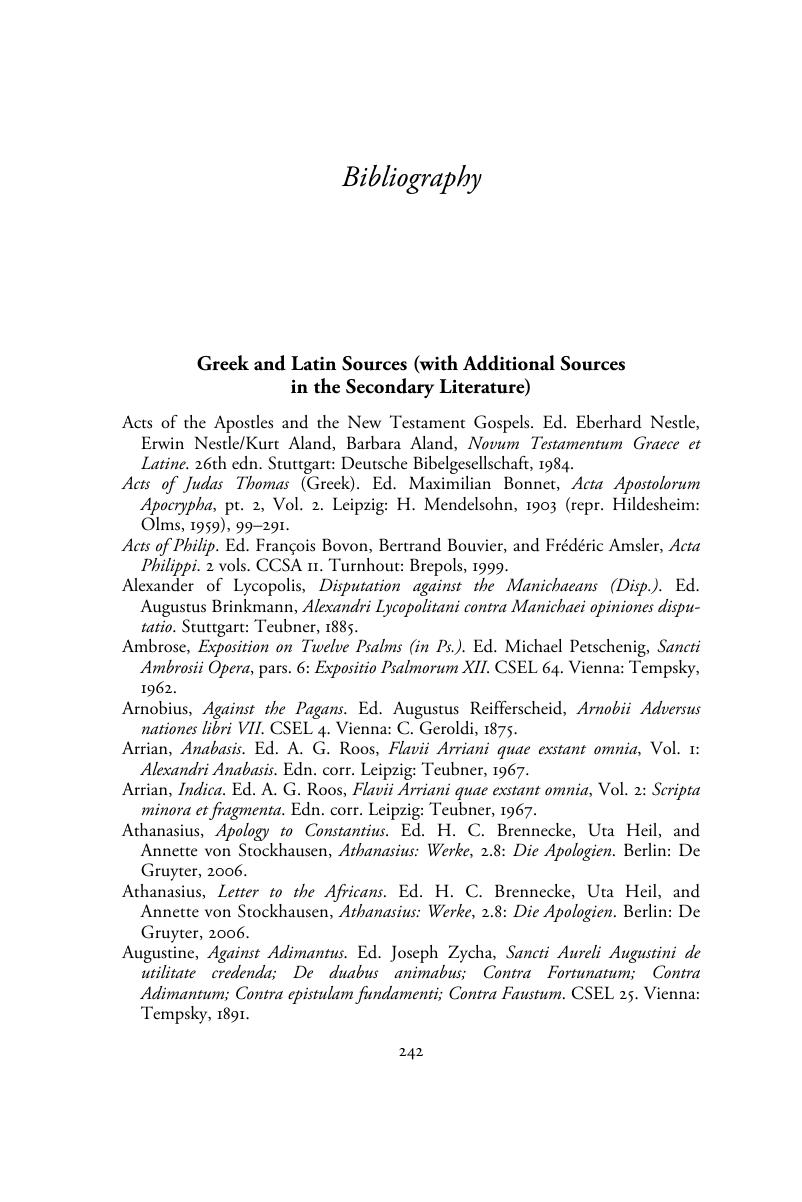Book contents
- The Journey of Christianity to India in Late Antiquity
- The Journey of Christianity to India in Late Antiquity
- Copyright page
- Contents
- Maps
- Preface
- Acknowledgments
- Abbreviations
- Introduction
- Part I The Acts of Thomas
- Part II Christianity, Networks, and the Red Sea
- Part III Christianity, Networks, and the Middle East
- Conclusion
- Book part
- Bibliography
- Index
- References
Bibliography
Published online by Cambridge University Press: 03 May 2018
- The Journey of Christianity to India in Late Antiquity
- The Journey of Christianity to India in Late Antiquity
- Copyright page
- Contents
- Maps
- Preface
- Acknowledgments
- Abbreviations
- Introduction
- Part I The Acts of Thomas
- Part II Christianity, Networks, and the Red Sea
- Part III Christianity, Networks, and the Middle East
- Conclusion
- Book part
- Bibliography
- Index
- References
Summary

- Type
- Chapter
- Information
- The Journey of Christianity to India in Late AntiquityNetworks and the Movement of Culture, pp. 242 - 291Publisher: Cambridge University PressPrint publication year: 2018



